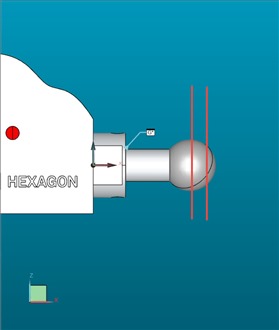When I use a cone as an input feature, PC-DMIS allows it but doesn’t allow circles constructed ON the cone.
I read in the Help files that only circles with “surface data” can be considered as valid circle features for Circular Runout: an example of this would be a circle constructed on a Cylinder, but not a Cone or Sphere.
So, I have 2 questions:
- Is Hexagon considering support for using a Sphere feature for Circular Runout?
- What would be the best workaround for evaluating Circular Runout on a specific section of a Cone (or Sphere). Ideally, I’d be looking for multiple results for cross sections of my choosing.

Rob Jensen neil.challinor
